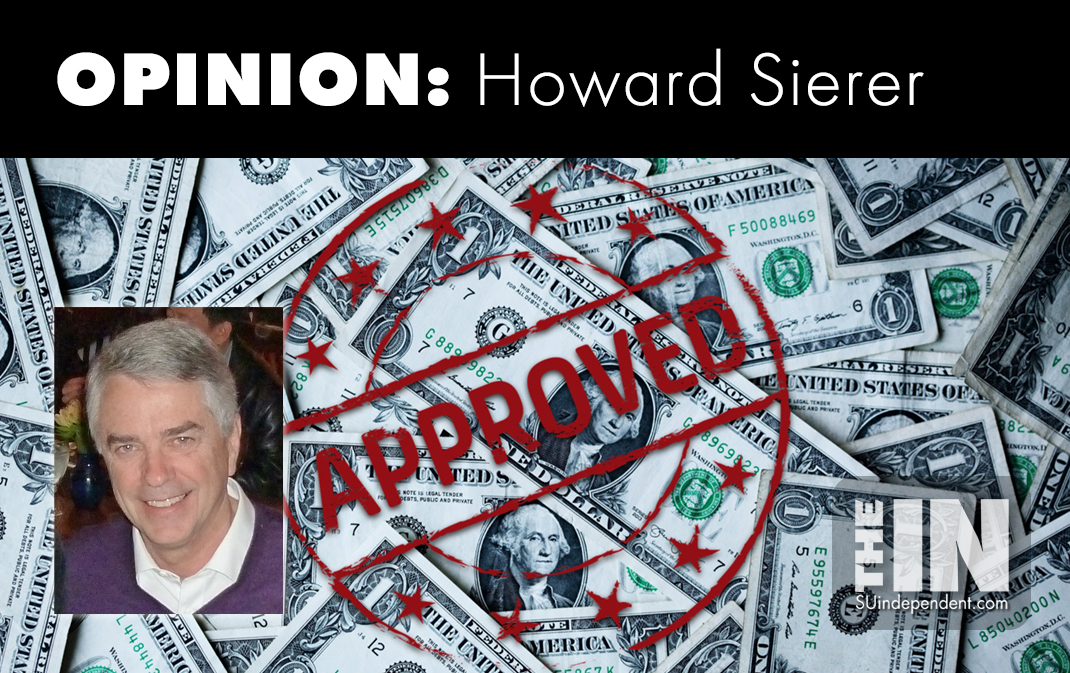
Green Corporate Welfare Running Wild
This month the national debt reached $32.6 trillion. In the good old days – all of three months ago – it was only $31.4 trillion, $1.2 trillion less. I long for the good old days.
The nation’s financial predicament calls to mind lines from Ernest Hemingway’s “The Sun Also Rises.” Question: “How did you go bankrupt?” Answer: “Two ways. Gradually, then suddenly.” On our current path, gradual then sudden bankruptcy is unavoidable.
Pres. Biden’s handlers in the White House and Congress are breaking records for spending and deficits during peacetime with no crisis crying out for government action. The fiscal and deficit impacts will be felt for years to come with the 2021 Infrastructure Act sending $1 trillion for state and local pork barrel spending and the 2022 CHIPS Act ladling out $280 billion taxpayer dollars to semiconductor manufacturers.
But the most egregious of all is the bill-of-goods sold to voters as the 2022 Inflation Reduction Act. Its headlines promised to lower the deficit and reduce drug prices, but the ravening wolf in sheep’s clothing was its provisions “promoting clean energy,” what amounted to a blank check for green corporate welfare. The fiscal damage will be far worse than I forecasted when the bill was passed last summer.
Instead of appropriating a specific amount of money (that we don’t have anyway), Democrats authorized open-ended corporate income tax credits available to all comers. Pouring salt on the wound, the tax credits are exempt from the law’s new alternative corporate minimum tax on book income.
All these tax credits are equivalent to a family voluntarily taking a major pay cut when they were already borrowing to meet monthly expenses.
Congressional Budget Office projections of the law’s reductions in corporate income tax receipts were way too small, no surprise since “free” money is hard to resist. Realistic projections of the amounts of corporate income taxes that won’t be paid show how much the hilariously-misnamed Inflation Reduction Act will cost taxpayers and add to inflation, not just this year but over the next several decades. The Federal Reserve will have to create more money to cover ever larger deficits.
Goldman Sachs estimates that the law will cost $1.2 trillion over the next ten years, three times as much as the $438 billion the CBO estimated last summer. The law’s various green-energy tax credits are not capped and most are available to businesses regardless of how much tax they otherwise might have paid.
But even that estimate undershoots the true price because it calculates only the costs over a 10-year budget window. Many of these tax credits won’t expire for decades.
The research firm Wood Mackenzie forecasts that U.S. carbon dioxide emissions won’t drop below the law’s threshold until 2044, meaning that renewable projects would qualify for tax credits as long as they begin operating before 2052. The firm says that “instead of several hundred billion dollars in tax credits for new renewables and storage through 2032, the real money on the table is on the order of trillions of dollars over multiple decades.”
A Brookings Institution study estimates that the law’s carbon-capture tax credits will reduce corporate taxes by $210 billion by 2040, a stunning $176 billion more than CBO projections. Like Goldman Sachs, Brookings projects that the law’s climate provisions could cost up to $1.2 trillion through 2031. A Credit Suisse report estimates that a special tax credit to boost U.S. solar, wind and battery supply chains will reduce corporate taxes by $250 billion, about eight times what CBO estimated.
The CHIPS Act and the Inflation Reduction Act represent huge and risky commitments to what is called “industrial policy” where a central government steps into the private economy, directing capital allocation, business investments and which products will be produced.
While tax policy is always intended to influence individual and corporate actions to some degree, in this case, targeting the relatively small green segment of the economy with trillions of dollars in tax cuts is unprecedented.
What are the odds it will be successful? Our government’s industrial policy track record is not good. Remember the Solyndra bankruptcy taking with it $535 million of taxpayer money guaranteed by the Obama administration? The economic landscape is littered with similar government failures. Corporate failures cost shareholders; government failures cost taxpayers.
Furthermore, throwing around $1.2 trillion of green corporate welfare guarantees waste, fraud and abuse on a colossal scale. We need look back no farther than the $64 billion in fraudulent payments given blank check approval by the Biden administration in the COVID-19 Paycheck Protection Program.
Taxpayers and the credit standing of the country are in the line of fire. Willingly or not, you and I are parties to a multi-trillion dollar bet backing the judgement of a handful of central-planning, socialist-leaning federal bureaucrats and their Democratic Party Congressional enablers.
Does government have a role? Definitely yes. It should fund basic research in its own labs and provide limited funding to university and corporate R&D labs. That’s how to solve the problems facing an all-electric future, problems like developing low cost and efficient battery technology that otherwise will limit electric vehicles’ usefulness. Government should also lead the way on public infrastructure, constructing a more robust and secure national electrical transmission network.
Democrats have bet the farm – your farm – on a helter-skelter transition to an all-electric future. Without some radical changes to the path they’ve set us on, we are doomed to Hemingway’s two-way future: national bankruptcy first gradually, then suddenly.



